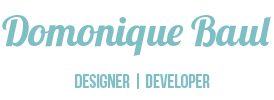Parent Portal
Transforming the chaos of remote early childhood education during the pandemic, the Parent Portal emerged as a dynamic and accessible lifeline, empowering parents with a single dashboard for streamlined communication and crucial information.

Introduction
During the height of the 2020 pandemic, Matrix Human Services’ early childhood program faced the daunting task of transitioning from in-person learning to a virtual self-paced curriculum. This necessitated the development of a Parent Portal—a single dashboard aimed at providing overwhelmed parents with easy access to pertinent information.
The successful implementation of the Parent Portal ensured compliance with accessibility standards, seamless delivery of information across mobile and desktop devices, and user-friendly updating capabilities for non-technical staff. This case study highlights the journey and outcomes of creating an efficient and effective Parent Portal solution to address the program’s needs during a challenging time.
My Contribution
Sketches, UI Design and Graphic Design with Adobe CC, Web Design HTML & CSS, WordPress Development, Stakeholder Interviews, Project Manager, Staff Training

Problem
The existing early childhood program at Matrix Human Services faced numerous challenges during the pandemic, including overwhelmed parents and staff due to multiple points of contact, the struggle to balance work and managing children at home, and information slipping through the cracks amidst fragmented communication channels.
Restraints and Governance
To tackle these challenges, the Parent Portal had to meet several requirements and constraints. With over 3,000 parents accessing information on both mobile and desktop devices, the solution needed to be accessible across different platforms. Multi-language support in English, Spanish, and Arabic was crucial to cater to the diverse user base. Moreover, the portal had to be easy to maintain by non-technical staff, requiring minimal training. Adhering to current technology standards was essential for seamless integration and efficient operation.
Solution
The Parent Portal provided a comprehensive solution by creating a dynamic landing page as a centralized parent dashboard. Through automated content updates based on new posts, parents could access the latest information without missing important updates. The design leveraged tags to influence the overall visual aesthetics and page styling, while category links enabled easy navigation to variable information specific to each center. Additionally, subpages were developed for static content, such as staff contacts, an annual calendar, and a lunch menu, ensuring quick access to essential information for parents and staff alike.
Implementation
During the implementation phase, a user-friendly interface with intuitive navigation was designed for the Parent Portal, ensuring ease of use for parents. A content management system was integrated to facilitate seamless updates by non-technical staff, enabling them to keep the information up to date. The organization of information was optimized using tags and categories, allowing for efficient presentation and retrieval of relevant content. Subpages were developed to provide quick access to static content, enhancing user convenience and navigation
within the portal.
Impact
The implementation of the Parent Portal brought about significant positive impact. Communication between parents and the program was streamlined, reducing the points of contact and improving overall user experience. By consolidating information in one accessible location, the workload on staff was reduced, enabling them to focus on their primary responsibilities. The portal minimized instances of missed or overlooked updates, ensuring parents had access to the most up-to-date information. Additionally, meeting accessibility standards and ensuring seamless accessibility across mobile and desktop devices further enhanced inclusivity and usability for all users.within the portal.


Learnings
Throughout the project, valuable learnings were gained. Conducting thorough stakeholder interviews proved essential in understanding user needs and pain points, guiding the design and development process. Designing with accessibility in mind from the outset was crucial in creating an inclusive solution. The effective use of tags and categories helped in organizing information, while subpages proved to be a practical approach for presenting static content.
Conclusion
The successful implementation of the Parent Portal addressed the challenges faced by Matrix Human Services’ early childhood program during the pandemic. By providing a centralized and user-friendly platform, the Parent Portal greatly improved communication, information flow, and user experience for both parents and staff. The project demonstrated the power of user-centered design, technological integration, and effective collaboration between technical and non-technical stakeholders. The Parent Portal stands as a testament to the importance of adaptability and innovation in overcoming challenging circumstances while meeting the evolving needs of users.

